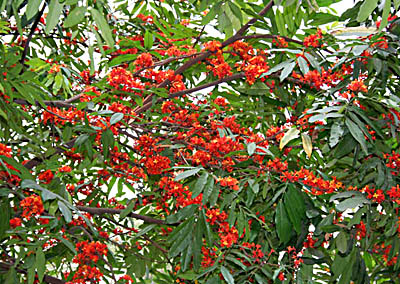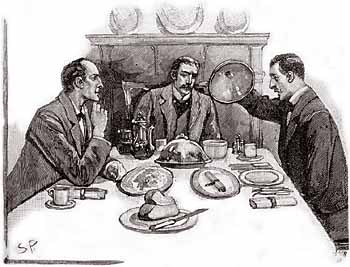One other advertisement was "Ajantha Nalpamara Soap". I did not have even a faint idea what Naalpamara was, until destiny took me to Ernakulam to head the Bank's M.G.Road branch almost two decades and half later. Mathrubhumi weekly in those days used to be printed on inferior quality paper. Or perhaps that was the best quality paper available then. The Nalpamara Soap advertisement was shabbier than most.
It must have been during the first one week of my charge of the branch, a small man in his early sixties called on me and introduced himself as the Proprietor of Ajantha Soaps. One of Alistair McLean's thrillers starts with a sentence "A small dusty man in a small dusty room; that is how I will always remember him" The novel ends also with the same sentence.
A shabby old man in a shabby old dress. That is how I will always remember this guy. The proprietary firm had remained a small proprietary firm, even after three decades. ( 'Chandrika' grew big enough to be swallowed up by Godrej) .This firm was a chronically sick unit of the Branch being kept alive through one rehabilitation assistance after another. The loan was not called up thereby ensuring instant demise of the unit only because of the transparent honesty of the man.
I visited his small unit, somewhere near the South over bridge I think, and at that time asked him what 'Nalpamara' meant. 'Athhi, Ithhi, Arayaal, Peraal' he rolled out. The soap was apparently prepared out of the oils of these four great trees of the Ficus family. The nominal activity going on at the unit was presumably towards achievement of this supreme end!
That brings me to the subject of this post which is 'Ripening of the fruits of Peraal and the steadily declining population of flying foxes.'. An imposing tittle, I am sure; like Charles Darwin's 'The voyage of HMS Beagle and an enquiry into the Origin of Species'. But first let me wind up Naalpamara soap.
I don't have the faintest idea whether the product is still in existence. Or the proprietor. I wish that particular story had a better ending. People are fond of saying "anaayasena maranam" but I always felt that the wish contained in the second line " vina dainaena jeevanam" (life without misery) is far more desirable. The old man was not fortunate to enjoy the latter; I wish he at least had the former.
Coming to the subject with the imposing tittle, Peral belongs to the Ficus family (Ficus Religiosa) also known as Ashwatham or Bodhi or Vada Vriksham. It flowers once a year and produces tiny fruits in abundance. It is difficult to see the fruits among the thick foliage but the flocking of "Vavvaals" (flying foxes) after dusk is a sure indication. In my younger days, one could see an army of 'choola pakshis' flocking the tree during daytime. I have not seen them for years. There is a saying in Tamil: "Eraa pakshi kaada, eranga pakshi choola" because these birds never come down to the ground. These birds must be extinct now in these parts.
The 'naickanaal' has bloomed and is full of fruits and flying foxes. The ground beneath is virtually a thick carpet of withered flowers, droppings and half eaten fruits. The vavvals perform their strange walks on the branches of the tree, hanging upside down, much like Dracula did on the steep walls of his castle in Transylvania. To add to the eeriness the 'Eazhilam pala' (Indian Devil tree) has also flowered and its overpowering smell is everywhere. In short ' aaj (kal) mausam beiiman hai'.
Tailpiece: Talking of old advertisements, this one used to intrigue me for quite sometime. " Kaalan Nellayi". I used to wonder how a curry like 'kaalan' can turn into paddy!















